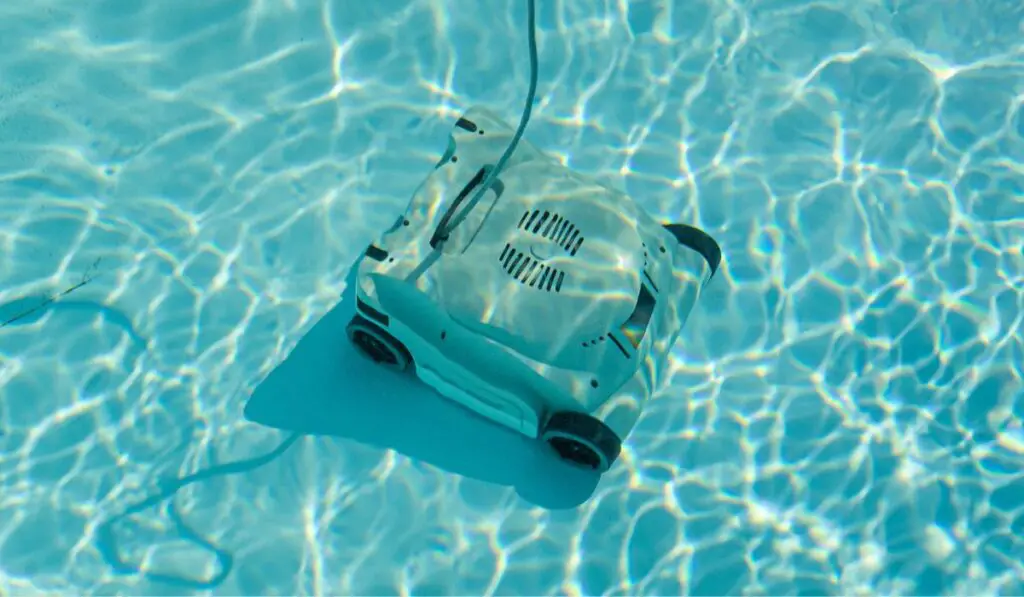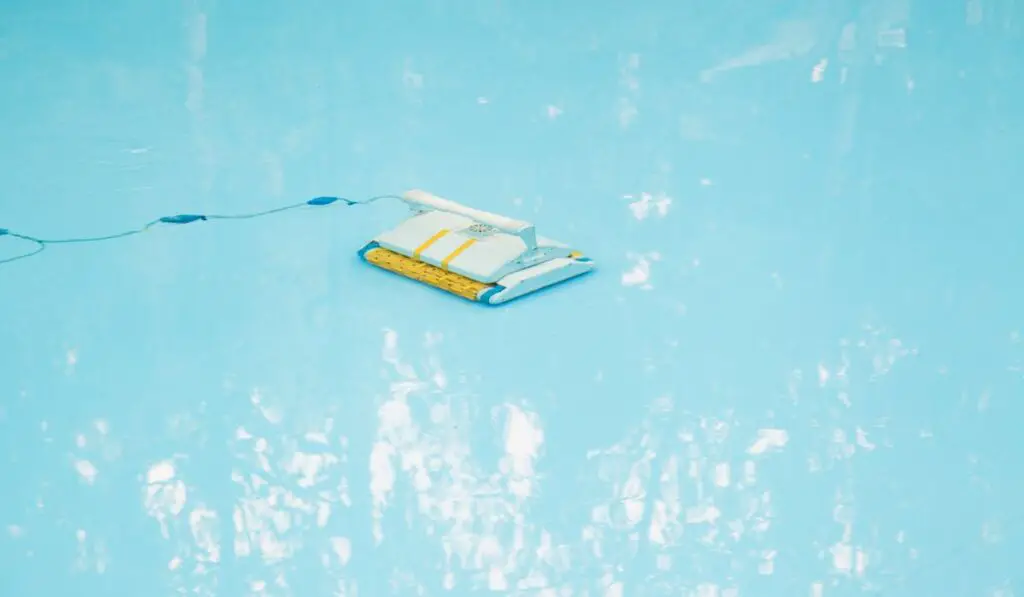Your pool may become home to dirt and algae in a flash if you don’t exercise regular maintenance. There are many ways to keep your pool clean and visually appealing, but the most common is vacuuming it occasionally. Here’s a comprehensive guide on vacuuming pools with sand filters.
To vacuum a pool with a sand filter, set the multiport valve to Filter, turn the pump on and start vacuuming. If the pool is extremely dirty with lots of debris, route the water to Waste instead of Filter, because a lot of large dirt can clog up your sand filter very quickly.
Being able to vacuum your pool correctly is an essential skill that you must have under your sleeve if you have a pool in your home. So let’s get into the details, so you learn how a pool vacuum works and how to use it correctly to clean your pool.
How Does a Pool Vacuum Work?

A pool vacuum utilizes the pool filter system and the vacuum force present in the skimmer lines to operate.
In a nutshell—when you vacuum your pool, instead of water being directly sucked from the pool skimmers, a pool hose is filled with water and press-fit into the skimmer inlet connected to a vacuum head on a pool pole.
As the skimmer pulls water through the vacuum tool, the vacuum head is pushed around the bottom and sides of the pool, sucking up dirt and debris. This dirt that the vacuum head picks up is conveyed through the skimmer inlet to the pump and then to the sand filter. Afterward, the filter removes the dirt and returns the clean water to the pool.
This is why, if you have a lot of debris, you probably want to go to waste instead: why choose to clog your filter which will require you to immediately backwash when you could simply drain the waste you’re vacuuming up?
How Do You Vacuum a Pool with a Sand Filter?
Vacuuming a pool that has a sand filter is pretty simple. Here’s how to do it:
- Brush around the pool sides to allow any dirt clinging on the sides to fall to the bottom.
- Use a pool net to pick up as much large dirt and debris, like leaves and stones, from the bottom of the pool as possible.
- Attach the vacuum head securely to the pool pole.
- Connect the hose to the pool vacuum head and lower the vacuum into the pool near the skimmer until it reaches the base of your pool.
- Now, remove air from the pool hose by filling it with water.
- Connect the hose directly into the inlet at the bottom of the skimmer (after removing the skimmer basket) or into the dedicated vacuuming inlet at the side of the pool, if it has one. Alternatively, you could connect it using a skimmer vacuum plate.
- Set the multiport valve to Filter if it’s not already on the setting.
- Switch the pump on at the electrical panel.
- Start vacuuming by moving the vacuum along the bottom of the pool. Do it gently to avoid disturbing the dirt at the bottom. Disturbed soil will float on the water and settle later, meaning you’ll have to vacuum again.
- Turn off the pump, disconnect the hose from the skimmer, and remove the vacuum from the pool.
- Empty the pump strainer basket and switch the pump back on. That’s it. You’re done!
If you are having issues with any of these steps, try our troubleshooting tips before calling a professional.
What Supplies Will You Need?

You’ll need the following tools at hand to make the task painless and also save time, and if you don’t have them, you can typically find a kit with all of the vacuuming components (on Amazon), or you can purchase them individually:
- Vacuum head: Since all vacuum heads are universal, any will do. Even so, you’ll have to consider your pool’s surface material, as some head types are best for specific materials like vinyl. It’s also best to use a weighty one so it doesn’t float around when vacuuming the pool.
- Telescoping pole: Like the vacuum head, telescoping poles are universal and can attach to any pool skimmer. Just be sure to use one long enough to reach the deepest part of your pool.
- Vacuum hose: You can connect the vacuum hose to any system. Ensure it reaches all parts of your pool.
- Vacuum plate/skim vac: A vacuum plate is vital as it allows you to use the skimmer basket instead of the pump strainer. Therefore, you won’t have to turn your pool pump on and off every time.
What Setting Should Your Sand Filter Be On?
When vacuuming your pool, your sand filter’s multiport valve should be on one of the following settings:
Filter
Filter is the setting often used and recommended when vacuuming, especially if you don’t have too much dirt and debris at the bottom of your pool.
When you vacuum on Filter, the water sucked up through the vacuum head passes through the filter, eliminating dirt and debris in the water before returning it to the pool.
Waste
Vacuuming on the Waste setting is only necessary if there’s too much debris in your pool for the filter to handle comfortably. This may include dead algae from shocking existing algae that may have infested your pool.
When you set the multiport valve to Waste, the water neither passes through the filter nor does it go back to the pool. Instead, it’s sent out of the pool outlet pipe into your yard.
Should You Remove Skimmer Baskets When Vacuuming?
You should remove the skimmer basket when vacuuming your pool if you use the suction inlet at the bottom of the pool skimmer. However, if you have a dedicated side vacuum inlet or use a skimmer plate, you don’t have to remove it.
And remember: if you remove the skimmer basket, you’re removing a feature that protects your pump. Don’t vacuum up and send down leaves or sticks, which would ordinarily be caught by the skimmer, because these can clogs lines or damage the pump – you need to remove larger debris like this using a net before you vacuum.
